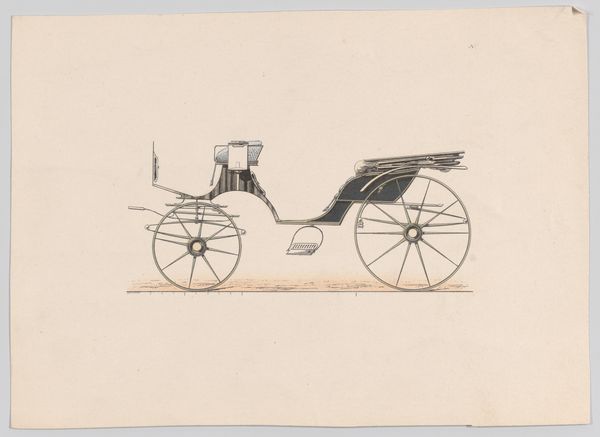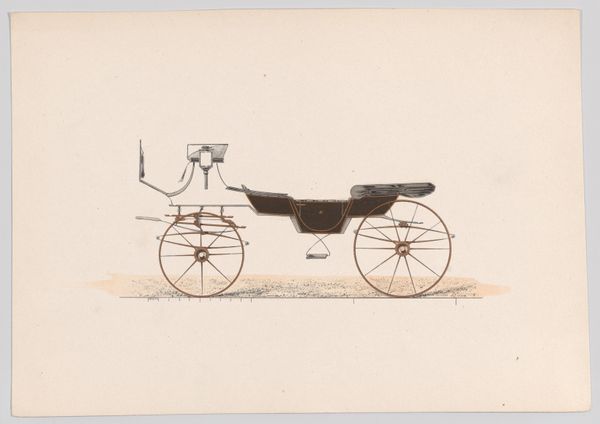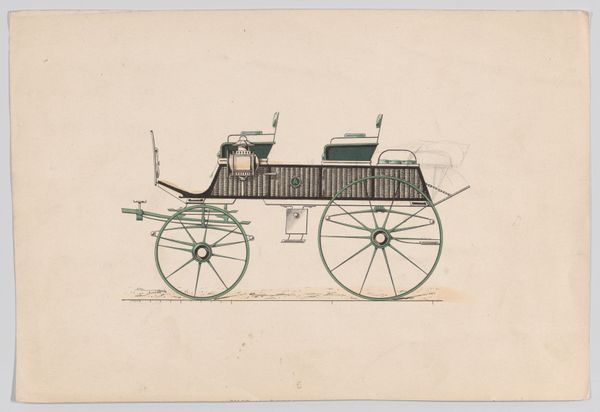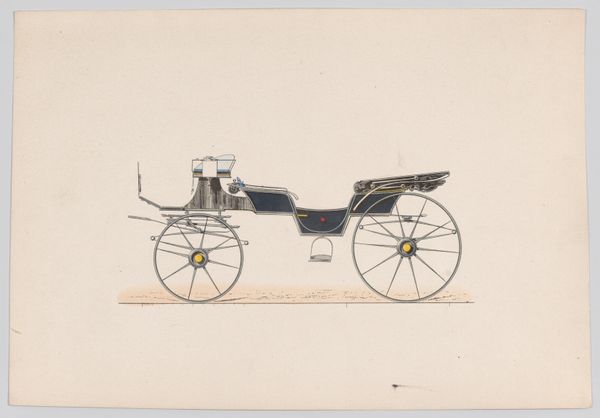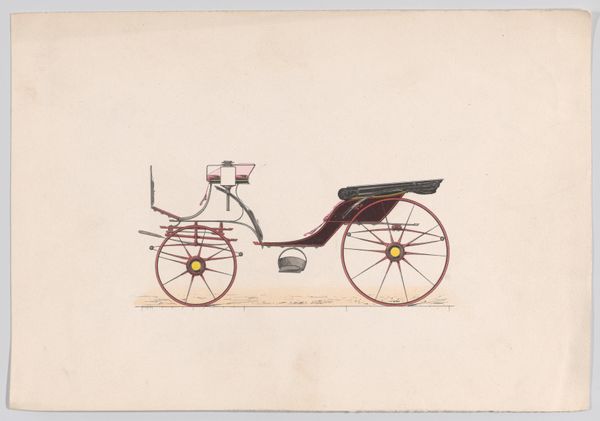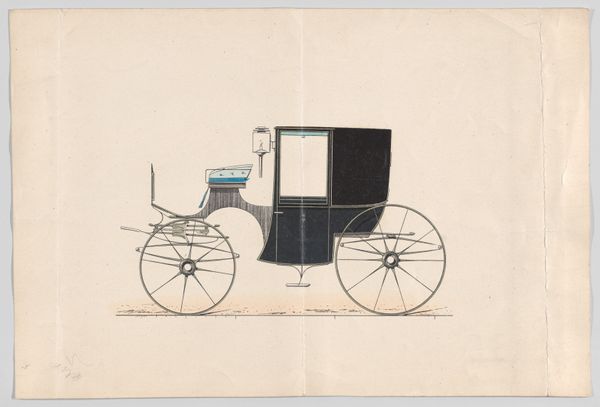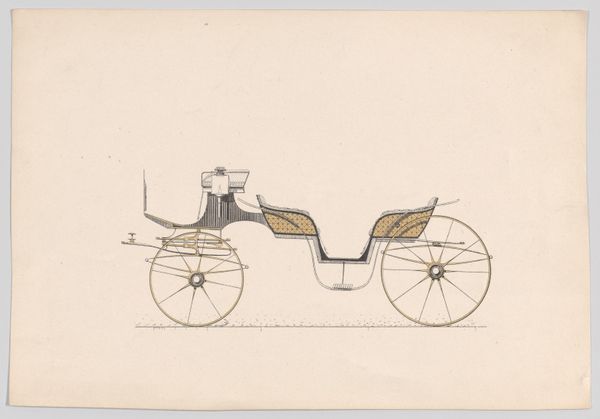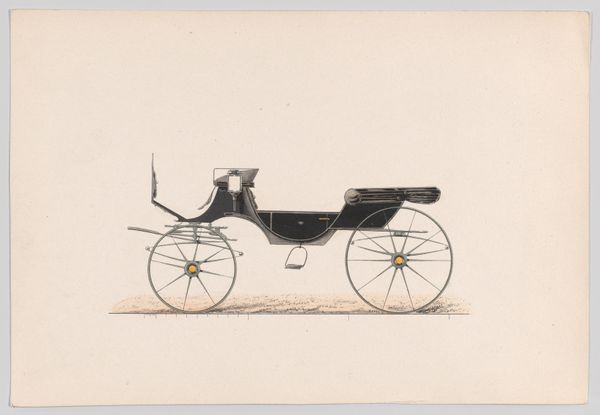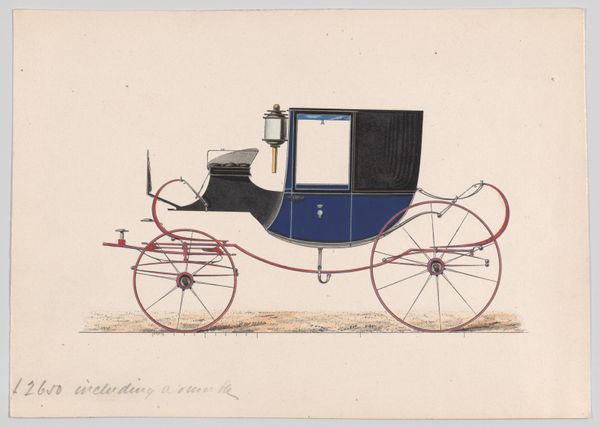
drawing, mixed-media, print
#
drawing
#
mixed-media
# print
#
genre-painting
Dimensions: sheet: 5 13/16 x 8 13/16 in. (14.8 x 22.4 cm)
Copyright: Public Domain
Editor: We're looking at "Design for Phaeton Carriage," a mixed-media drawing from 1875 to 1885, housed here at the Met. It feels very technical, almost like an architectural blueprint. How do you interpret this work as more than just a design? Curator: This image provides us with an interesting lens through which we can examine class and mobility in the late 19th century. Consider the Phaeton carriage itself – a symbol of wealth and status. This wasn’t just transportation; it was a statement. How might the design of such an object reflect or reinforce existing social hierarchies? Editor: So, the carriage becomes a marker of identity and power? Curator: Precisely. And the drawing itself serves as a testament to the labor and craftsmanship involved in creating these status symbols. Think about the social stratification embedded in the very process: who designed it? Who built it? Who owned it? And how did their roles differ and intersect? Editor: That makes me consider the artist's perspective; what are their interests in such depiction? Curator: Good question. We should also investigate the relationship between technology, industrialization, and artistic representation. How does the mechanical precision of the design influence its aesthetic value and our understanding of progress? Editor: I hadn't thought about it that way. Seeing it as a confluence of social factors and technological advancement makes it far more intriguing. Curator: Absolutely! Artworks like this aren't created in a vacuum. They participate in broader cultural conversations around power, labor, and identity, if we interrogate the historical conditions of this drawing and the thing it is designed to manufacture. Editor: Thanks for unpacking that, I see this design for a carriage is far more than just meets the eye! Curator: Indeed, and it encourages us to question whose stories are being told and whose are being left out when considering objects of beauty and utility from the past.
Comments
No comments
Be the first to comment and join the conversation on the ultimate creative platform.
